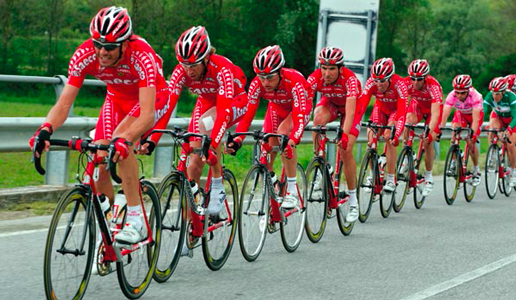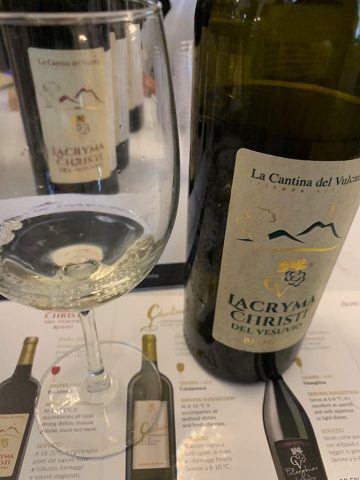Montalcino between innovation and “slip-streaming”.

When tasting the older vintages it becomes clear that today the aromas of Italian wines overlap each other and what is needed now is courage and research to give greater varietal and territorial personality to Italian wines.
Those who think that the innovators are those who use small barrels, better if French, should not read this article. The push-and-pull over whether barriques should be use has become old and to keep going down this road would be useless. This article will also avoid the debate over whether or not to use indigenous yeasts. Here we will focus on aromas , beginning with a reflection on something that is becoming ever more evident.
After taking part in a host of blind tastings of great Italian red wines, which go back at last 20-25 years, a problem of fundamental importance has become clear to me: the aromatic recognition of aged wines . Unless one is a great expert, and sometimes not even this is enough, it is very difficult to distinguish between the aromas of a Brunello or a Barolo or an Aglianico or any other wine made from native grapes in the 1980s and the beginning of the 1990s. Recognizing French wines, on the other hand, is much easier because Bordeaux wines have that distinct pyrazine component and even if their volatile substances are not that different, it is even not difficult to distinguish between a Burgundy and a Rhone wine. In France, they have common denominators when it comes to winemaking and aging which help to recognize the different wines, through an aromatic codification of the various varietals that is clear and accepted by producers as well as international critics.
One need only look at all the research done at the University of Bordeaux on the effect of brettanomyces (Brett) has on aromas and the efforts made to avoid finding its derivatives in wine to understand the importance the French give to aromas. Unfortunately, in Italy we are still at the point that there are those who claim that Brett is territorial or has to do with the complexity of the aroma and that a volatility helps scents emerge. This is ridiculous from a scientific point of view and outrageous from a flavor point of view. One cannot codify a defect because a defect levels everything and destroys both territoriality and the varietals that represent it.
Just like the innovators did from 1985-1990 in the area of Barolo, where research began in the vineyard and also involved fermentation, and not the use of barriques as many think, this research also began with the vineyard . The territory where prolonging the aromatic life of a wine is most felt is Montalcino and for an Amarone producer who I will not name because he is a friend of mine. Once again the innovators in this case are young, often second or third generation winemakers. Montalcino , thanks to the excellent margins allowed for Brunello, is well-suited for this research that has entailed significant investments both in the vineyard, with very prudent harvest choices, and the winery, above all from when the grapes are picked and made into wine. Unfortunately, the total absence of any university research on aromas and how to stabilize them in Sangiovese, as well as other varietals, makes this quest both individual and difficult .
With the 2012 and 2014 vintages we can begin to see the first results of the new ideas producers have introduced, even if some Brunello 2012 were also subject to changes made regarding fermentation. The research is transversal to the style of aging adopted for the wine. What is evident now is the fundamental importance of the exact ripeness of the grapes because while their phenolic maturity is important it is not the only parameter to take into consideration, as was the case in the 1990s and beginning of the next decade. The ripeness of the grapes because the variable of quality within the same bunch surpasses by 20% only six of the parameters to take into consideration. Thus more attention is paid to the selection of the grapes, first during a delicate destemming that removes only the fruit that is then subject to a further selection, be it optical or measuring the density, which separates the grapes according to appropriate parameters of ripeness. In the end, this results in a reduction in the final product . All this after the bunches were selected by hand on the classic separating table which is the minimum for a quality wines.
The result of all this selection is then fermented in a non-invasive way both temperature-wise , with fermentation beginning at a low temperature that then rises slowly without ever surpassing 32°C, and when using mechanical means to stir the must . Few producers follow all these steps but do follow a method that incorporates at least some of them. The practice of delestage and pumping over is thus less because while this did create more extracts it was at the expense of the aromas. We have noticed that the Brunello from the 1990s with a more fruity and intact aromatic profile were the ones that were “beaten” less during fermentation and spent less time maturing in barriques, especially at the beginning. These wines maintain a better, more intense cherry sensation and for a longer time. Keep in mind that the aromatic profile of Sangiovese is dominated by cherry in it various versions depending on the location and the year.
With the new methods of selection and fermentation this cherry component is amplified without losing the contribution of the land, if it is present, in that it does not overshadow the more, let’s say, oxidative notes like medicinal herbs, leather and tobacco which for years were those that identified it. It should also be pointed out that a better selection of the grapes improves the tannins in the wine making them less aggressive thanks to a better polymerization .
As always occurs in Italy, these innovations have created divisions with people taking sides without any real justification. Many “slip-streamers” (to use a bicycle and motor racing term) seek to maximize their earnings and opposed innovation in the name of tradition, when the truth is that they just do not want to spend, preferring to exploit the territory as inexpensively as possible and exploit those who have created interest in it by investing and adopting new ideas.
I believe that the producers’ association should also be active in providing information about these new methods but as of late it has been silent about everything, preferring to stick to the old way of doing things. Aside from the producers, great opposition to innovation comes from Italian wine critics who are becoming increasingly isolated and self-referential, preferring to defend their position as self-proclaimed gurus and opting for sermons over dialogue. Many Italian wine experts have a single concept of what Brunello should be: a wine that is aromatically “old” because it has aged long in the cellar and thus they prefer its oxidative properties because this is the way Brunello has always been for them. American critics, on the other hand, have always been more curious about innovation and this is a good thing because America is the most important market for Montalcino as well as other quality wines. The embarrassing result of a tasting held during a renowned international contest, with a jury composed of experienced professionals, saw the best Brunello 2012 being one from a well-known bottler. Not all Brunello were present at the tasting but there were some good ones. This says a lot about how Montalcino is seen abroad.
Perhaps the time has come for producers’ association to adopt a better strategy and provide more and better information.

 Italiano
Italiano








